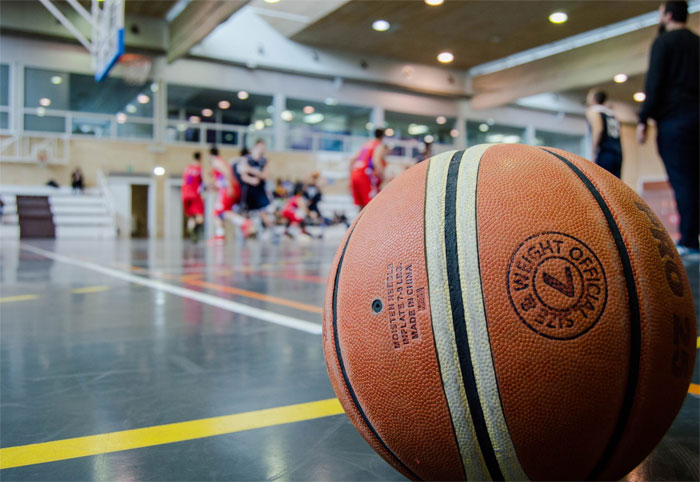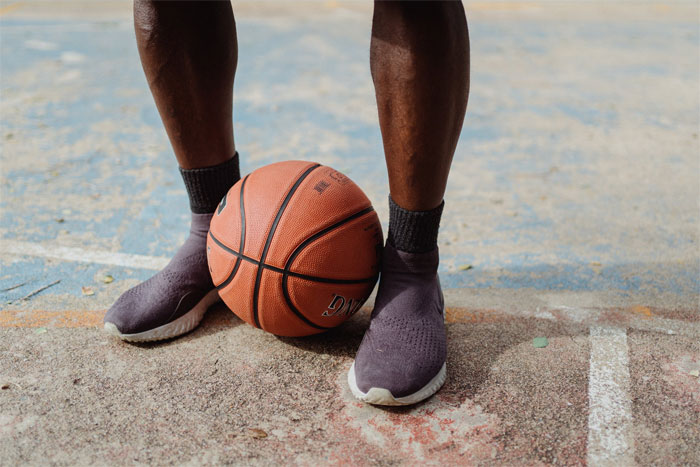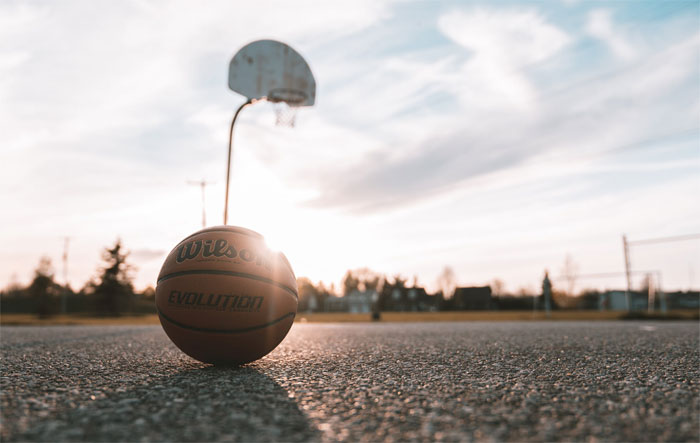Basketball is one of the most popular sports out there. It's easy to see why: it's entertaining, fast-paced, and versatile. You can play basketball outside or inside, whether you have a full-court or a simple basketball hoop in your backyard.
However, one important thing to remember when playing basketball is that not all basketballs are suitable for the same environments.
There are specific basketballs made for indoor play and outdoor play. While it's technically possible to use these two options interchangeably, it may not be the best idea in the long run.
So, what is the difference between indoor and outdoor basketballs? Keep reading the comprehensive guide below to find out.
Material
Material is probably the most significant difference between the types of basketballs, with choices between full-grain leather, rubber, and synthetic materials.
Even though indoor and outdoor courts may look similar and can be similar to play on, the truth is the courts couldn't be more different, and that affects the types of materials used to create indoor and outdoor basketballs.
Indoor
When it comes to indoor balls, most consist of full-grain leather. Up until 2020, when the NBA switched its official basketball maker to Wilson, Spalding used full-grain leather for its regulation balls.
Full-grain leather is best for indoor courts because the slick floors aren't nearly as rough or rugged as outdoor courts made from concrete or asphalt.

If you've purchased a brand new indoor basketball, you would have noticed that it almost feels slippery.
Because of this, indoor options usually need to go through a breaking-in period before a game. The usage allows the ball to lose some of this slipperiness and bounce better.
Outdoor
On the opposite end, outdoor basketballs need to withstand much rougher conditions. Because outdoor basketball courts endure weather, dirt, and other harsh elements, they consist of rougher materials like asphalt or concrete.
These are much more damaging to sports equipment than the smooth, polished floors of an indoor court.
Because they need to be so durable, outdoor basketballs are usually rubber or composite materials. These balls do not need any breaking-in period but instead are ready to use right out of the box.
This material is much coarser, and the ball feels harder and heavier. While these balls may look similar to traditional options, you can tell the difference once you start to play.

Indoor vs. Outdoor Basketballs: The Materials and Performance
It is technically possible to use the two types of basketball interchangeably, but it's not advisable.
You would probably only manage a few games before an indoor basketball starts to deteriorate outside since it is not suitable for rough conditions. As such, the material will degrade over time, affecting your performance.
While an outdoor basketball won't fall apart on an indoor court, it can affect how well you play. Because of the heavy material, outdoor basketballs don't bounce the same as indoor ones and aren't as easy to handle.
Cost
The cost is another factor in what is the difference between indoor and outdoor basketballs.
Pricing can vary dramatically for several reasons, but indoor basketballs are always much more expensive than outdoor ones. Compared to the price range of $60 to $100 for an indoor ball, you could pay as little as $15 for the outdoor option.
The price difference comes down to a few things, one being durability. While using an outdoor basketball indoors is less than ideal, it is still possible without damaging the ball itself.
On the contrary, an indoor ball will quickly fall apart if used outside. The indoor ball is usually much higher quality and can last much longer than an outdoor ball if appropriately used.
In addition to durability, the material also plays into the cost of the product. Because outdoor options are usually rubber or synthetic material, they are cheaper to produce than indoor balls made of genuine leather.
Longevity
If used properly, both types of basketballs can last for years on end. Properly maintaining these basketballs includes keeping them clean, inflated, and patched up if there is any damage.
The most significant thing you can do to keep your basketball in top shape is to keep it adequately inflated since letting the ball deflate will cause more damage. NBA regulations stipulate that balls should be between 7.5-8.5 psi.
Play
Because of the difference in material and the environment, your play style can change between indoor and outdoor basketballs.
Indoor
We've already established that the indoor option is much slicker, with a smooth surface made of leather. This leather also provides a high level of grip.
Even if your palms are sweaty, it's possible to maneuver this material with high skill. While performance is down to the player's skill, it is easier when using an indoor ball.
The combination of smooth flooring and the leather material also creates a great bounce to the indoor basketball, which decreases with the outdoor option due to the roughness in material and environment.
Outdoor
While not as sleek as the indoor option, outdoor basketballs are great for new players.
The synthetic material is much more durable, and outdoor basketballs may also have enhanced grip so that players can hold onto it even with sweat and dirt coating the surface.
While athletes can utilize more intricate moves with an indoor basketball, the outdoor option is all about power.

Which Option Is Best for You?
With the three main categories laid out, we've explored the all-important question: What is the difference between indoor and outdoor basketballs?
Now that we are familiar with the longevity, cost, and materials, let's lay out the pros and cons of each.
Indoor Basketballs
Pros
- Provides superior performance on an indoor court
- More aesthetically pleasing than outdoor basketballs
- Higher-quality materials used in manufacturing
- Seen as an investment
- The first choice of professional players
- Allows players more control
Cons
- Needs breaking before using in a game
- Most expensive option
- Not suitable for outdoor use
Outdoor Basketballs
Pros
- The more durable option
- Works both inside and outside
- The cheaper option
- Won't need replacing as often
Cons
- While possible, playing indoors isn't ideal
- Allows players less control
As you can see, each option has its pros and cons. Determining which option is best for you depends on your situation, namely where you will be playing.
If you prefer the look of an indoor basketball but only have an outside court, then you will end up replacing your basketball very often.
While not ideal, it is possible to use the outdoor basketball to play indoors, which is essential when considering the versatility of your purchase.
Conclusion: Indoor vs Outdoor Basketball
Choosing the right basketball for you begins with determining what is the difference between indoor and outdoor basketballs.
Now that we have fully explored the longevity, play style, cost, and material of each option, it will be easier than ever to figure out which option is best for your lifestyle.
If you enjoy playing basketball both indoors and outdoors, your best option might be to purchase an outdoor basketball first.
While you're saving up for a stylish indoor ball, you'll be able to switch back and forth with the rougher outdoor option in the meantime to get the best of both worlds.
